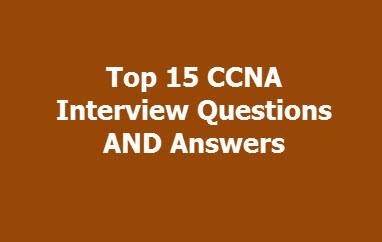Ques 1: What is routing?
Ans. Routing is process of finding the shortest path for communicating from source to destination. This process is accomplished by the routers on network.
Ques 2: What is VLAN?
Ans. Virtual LAN or VLAN is a logical groupor segment network connected to administratively defined ports on a switch, they Broadcast control, Flexibility and security.
Ques 3: What is sub-Netting? Why it is used?
Ans. It is used to break the larger network into smaller sub-networks, used in IP Networks. Basically used for minimizing the network traffic, optimizing the performance, and managing the network.
Ques 4: What is RAID?
Ans. A method to standardize and categorize fault tolerance disk systems. Some servers use the three RAID: RAID Level 0 (stripping), RAID Level 1 (mirroring) and RADI Level 5 (stripping and parity).
Ques 5: What is difference between TCP and UDP?
Ans. TCP is connection oriented Protocol whereas UDP is connectionless protocol. In TCP protocol reliable transmission is done. UDP is less reliable then TCP.
Ques 6: Difference between public IP and private IP?
Ans. Public IP should be unique address that is assigned to a company. Private address can be used by anyone on private network because it is not recognized by the internet.
Ques 7: Explain difference between Router, Switch and Hub?
Hub: A hub is typically the least expensive, least intelligent, and least complicated of the three. Its job is very simple – anything that comes in one port is sent out to the others. Hub has single collision domain and single broadcast domain
Switch: Switch is a device that filters and forwards packets between LAN segments. Switches operate at the data link layer (layer 2) and sometimes the network layer (layer 3) of the OSI Reference Model and therefore support any packet protocol. Switches have multiple collision domains and have a single broadcast domain
Ques 8: Explain broadcast and collision domain?
Ans:
A broadcast domain is a logical division of a computer network, in which all nodes can reach each other by broadcast at the data link layer.
A collision domain is a section of a network where data packets can collide with one another when being sent on a shared medium or through repeaters
Ques.9: What is the range of class A address?
Ans: Class A Range from 1.0.0.1 to 126.255.255.254 and Supports 16 million hosts on each of 127 networks.
Ques 10: What is the range of class B address?
Ans: Class B range from 128.1.0.1 to 191.255.255.254 and Supports 65,000 hosts on each of 16,000 networks.
Ques 11: What is the range of class C address?
Ans: Class C range is from 192.0.1.1 to 223.255.254.254 and Supports 254 hosts on each of 2 million networks.
Ques 12: What is DHCP scope?
Ans: A Dynamic Host Configuration Protocol (DHCP) scope is the consecutive range of possible IP addresses that the DHCP server can lease to clients on a subnet.
Ques 13: What are the different memories used in a CISCO router?
Ans: – NVRAM stores the startup configuration file
– DRAM stores the configuration file that is being executed
– Flash Memory – stores the Cisco IOS.
Ques 14: Differentiate full-duplex from half-duplex.
Ans: In full-duplex, both the transmitting device and the receiving device can communicate simultaneously, that is, both can be transmitting and receiving at the same time. In the case of half-duplex, a device cannot receive while it is transmitting, and vice versa.
Ques 15: What is MTU?
Ans: MTU stands for Maximum Transmission Unit. It refers to the maximum packet size that can be sent out onto the data line without the need to fragment it.
CCNA Updated Question and Answers
| 200-101 | Interconnecting Cisco Networking Devices Part 2 (ICND2) | Order PDF |
windows 8.1 enterprise lizenz kaufen

